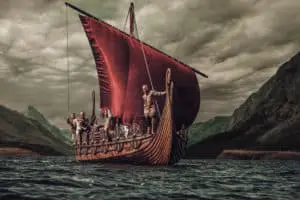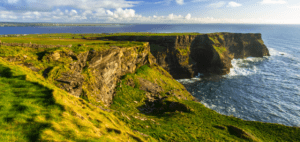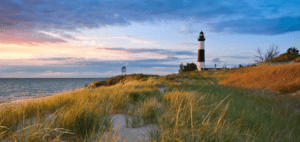Fish of Ireland: A Journey into Aquatic Abundance
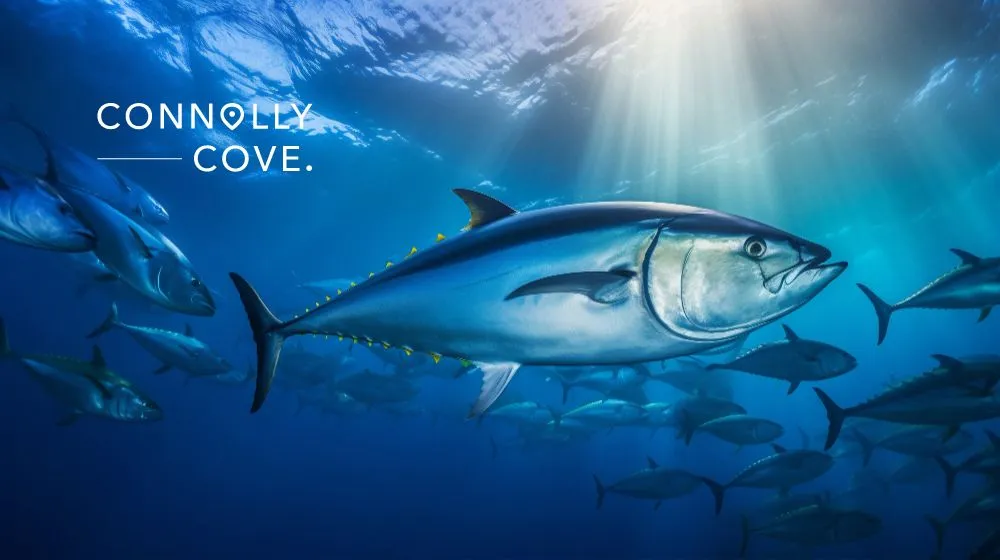
Updated On: December 07, 2023 by Yasmin Elwan
Nestled amid the swirling waters of the Atlantic Ocean, Ireland boasts a coastal tapestry teeming with a diverse array of marine life. From the majestic Atlantic Salmon and elusive Brown Trout to the flavoursome Haddock and lesser-known Gurnard, the fish of Ireland paint a vivid portrait of the country’s rich aquatic biodiversity.
Beyond their ecological significance, these aquatic denizens play a crucial role in the cultural fabric and economic tapestry of the Emerald Isle. In this exploration of the “Fish of Ireland,” we delve into the depths of Irish waters, unravelling the importance of fisheries in both sustaining local traditions and contributing to the nation’s vibrant economy. Join us as we navigate the currents of Ireland’s fishing heritage and cast a line into the intricate relationship between the islanders and their aquatic companions.
Coastal Waters and Fisheries in Ireland
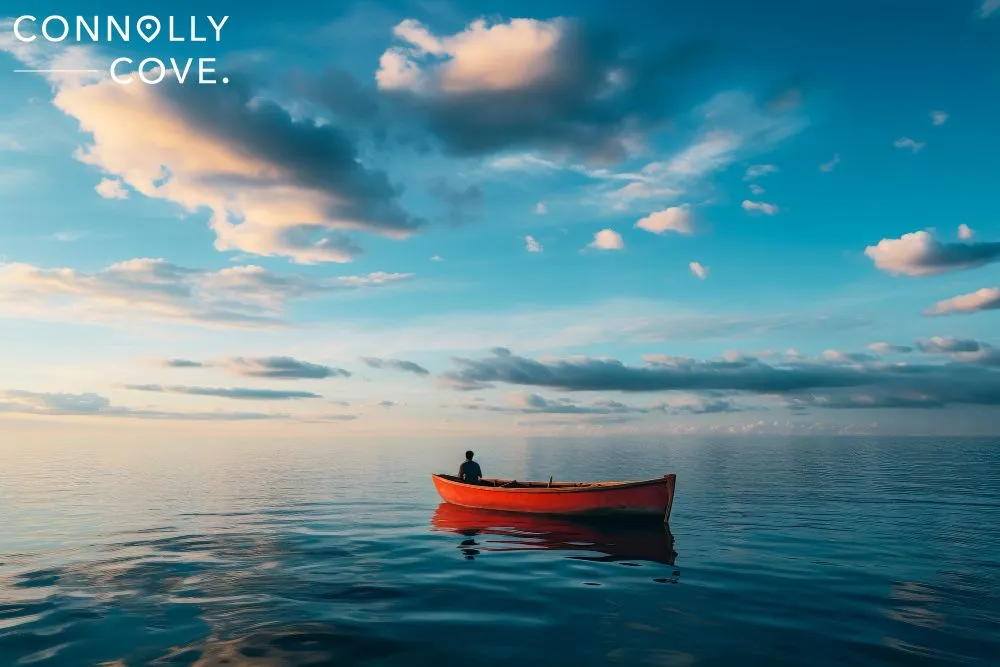
Nestled amidst the tempestuous embrace of the Atlantic Ocean, Ireland’s coastline stretches over 7,000 kilometres, forming a tapestry of rugged cliffs, sheltered bays, and sandy beaches. This expansive marine realm harbours a rich biodiversity, with over 300 species of fish calling Irish waters home. From the depths of the continental shelf to the sun-dappled shallows, the waters around Ireland teem with life, providing sustenance for coastal communities and supporting a thriving fishing industry.
Ireland’s extensive coastline plays a pivotal role in shaping the country’s cultural identity, economic prosperity, and environmental heritage. The bountiful fisheries that thrive along this coastal frontier have long been a cornerstone of Irish tradition, providing sustenance and livelihoods for generations. Today, the Irish fishing industry remains a vital economic sector, contributing significantly to the nation’s GDP and employment.
However, the delicate balance of this marine ecosystem faces increasing threats from overfishing, pollution, and climate change. Ensuring the sustainability of Ireland’s fisheries is paramount for preserving the health of our marine environment and safeguarding the livelihoods of those who depend on it. Sustainable fishing practices, such as implementing quotas, utilising environmentally friendly fishing gear, and establishing marine protected areas, are essential for ensuring the long-term viability of the fishing industry.
Key Fishing Regions in Ireland
Ireland’s coastal waters are divided into several distinct regions, each with its unique characteristics and fishery yields. The west coast, battered by Atlantic storms, is renowned for its abundance of deep-water species, including hake, monkfish, and blue whiting. The south coast, with its calmer waters and sheltered bays, is home to a diverse array of fish, including mackerel, herring, and shellfish. The east coast, influenced by the nutrient-rich waters of the Irish Sea, supports a thriving fishery for cod, plaice, and lobster.
These diverse coastal regions, each with its unique ecological niche, contribute to the overall richness of Ireland’s marine ecosystem. The sustainable management of these fisheries is not just about safeguarding the livelihoods of Irish fishermen; it is about preserving the delicate balance of our marine environment, ensuring that future generations can continue to reap the bounty of Ireland’s coastal waters.
Fish of Ireland: A Deep Dive into Iconic Species
From the depths of the Atlantic Ocean to the sheltered bays and estuaries, the waters around Ireland provide a haven for a variety of fish, each playing a vital role in the intricate web of marine life. This article delves into the fascinating world of Irish fish species, exploring their unique characteristics, ecological significance, and culinary value.
Atlantic Salmon
The Atlantic Salmon, an iconic species in Ireland’s waters, embarks on an extraordinary life cycle that intertwines with the country’s cultural heritage. Native to Irish rivers, this remarkable fish begins its journey in freshwater, hatching from eggs laid in gravelly riverbeds.
As it matures, the Atlantic Salmon navigates downstream, eventually reaching the open ocean, where it spends several years growing and thriving in the rich marine environment. When it’s time to reproduce, these salmon embark on an arduous journey back to their natal rivers, navigating obstacles and demonstrating a remarkable homing instinct.
The spawning grounds, often nestled in pristine Irish rivers, witness this awe-inspiring cycle. The Atlantic Salmon holds immense cultural significance, symbolising resilience and the cyclical nature of life. Beyond its cultural importance, the salmon is a prized catch in Ireland’s angling traditions.
Anglers from around the world are drawn to the challenge of catching this powerful and elusive fish, contributing to a vibrant angling culture that values both the sport and the conservation of this vital species. The Atlantic Salmon, with its life cycle intricacies and cultural importance, stands as a testament to the intertwined relationship between Ireland’s waters and its rich heritage.
Brown Trout
The Brown Trout, a prized inhabitant of Ireland’s freshwater ecosystems, is a species cherished by anglers for its elusive nature and spirited fight. Distributed widely across the island, these trout thrive in diverse habitats, from fast-flowing rivers to serene lakes.
Renowned for their stunning colouration, with distinctive spots scattered along their sides, Brown Trout can be found in water bodies such as the River Shannon, Lough Corrib, and Lough Mask. These picturesque locations not only provide an idyllic backdrop for angling but also contribute to the allure of fishing in Ireland.
Anglers flock to the banks of these water bodies, armed with fly fishing gear and lured by the promise of landing a trophy Brown Trout. The River Shannon, Ireland’s longest river, offers varied opportunities for angling, while Lough Corrib and Lough Mask, two of the largest lakes, provide expansive settings for both novice and experienced anglers.
The abundance of Brown Trout in these locations showcases Ireland’s commitment to sustainable fisheries, ensuring that generations of anglers can continue to enjoy the thrill of pursuing this iconic species amid the scenic landscapes of the Emerald Isle.
Haddock
Haddock, a cold-water species thriving in the pristine marine environments around Ireland, boasts a fascinating life cycle deeply intertwined with the nation’s rich fishing traditions. These fish exhibit a migratory pattern, often congregating in deep, cool waters for spawning.
The nutrient-rich seas surrounding Ireland, particularly the Atlantic Ocean and the Irish Sea, serve as vital spawning grounds for Haddock. Commercially, Haddock holds significant importance in the Irish fishing industry. Its delicate white flesh and mild flavour make it a prized catch, contributing to the economic sustenance of coastal communities.
Fishermen employ various methods to harvest Haddock, ranging from traditional longlining to modern trawling techniques. These methods, guided by sustainable practices, ensure the continued availability of Haddock for both domestic consumption and international trade.
In Irish kitchens, Haddock finds its way onto menus in diverse culinary creations. Whether grilled, smoked, or included in hearty fish stews, the versatility of Haddock adds to its popularity among seafood enthusiasts. The delectable taste and culinary flexibility of Haddock underscore its significance in both Irish fishing heritage and contemporary gastronomy.
Lesser-Known Fish Species in Ireland
While familiar species like salmon and haddock often take the spotlight, Ireland’s waters harbour a treasure trove of lesser-known fish, each with its unique charm. From the elusive wrasse to the colourful gurnard, these lesser-known species contribute to the rich biodiversity of Ireland’s marine habitats.
Exploring these hidden gems not only adds variety to the fishing experience but also sheds light on the diverse aquatic ecosystems that make Ireland a haven for anglers seeking a different kind of thrill beneath the waves.
Pollock
Pollock, scientifically known as Pollachius pollachius, is a species that thrives in Ireland’s diverse marine environments. Known for its distinctive lateral line and olive-green hue, Pollock is commonly found along the rocky shores and deeper waters of the North Atlantic.
In Ireland, these fish are prevalent in regions such as the Atlantic coast and the Irish Sea. Beyond their significance in local ecosystems, Pollock holds commercial importance, featuring in both recreational and commercial fisheries. Anglers are drawn to the challenge of catching this agile species, while commercial fisheries recognise its value for its flesh, which is renowned for its mild flavour and versatility in culinary applications.
The presence of Pollock in Irish waters contributes to the dynamic tapestry of marine life, showcasing the ecological richness that makes Ireland a compelling destination for those seeking diverse and rewarding fishing experiences.
Ray
In the coastal waters of Ireland, the graceful ray, a cartilaginous fish, glides through the underwater landscape, captivating both anglers and marine enthusiasts. Known for their flat bodies and distinctive disc-shaped appearance, rays inhabit a variety of habitats, from sandy bottoms to rocky seabeds.
Though not as commercially prominent as some counterparts, rays hold significance in local fisheries, contributing to the diverse array of species caught by Irish fishermen. Anglers appreciate the challenge and thrill of pursuing these elusive creatures, often engaging in catch-and-release practices to ensure sustainable conservation.
Conservation efforts play a crucial role in maintaining the delicate balance of Ireland’s marine ecosystems, and understanding the biology and behaviour of rays becomes essential for safeguarding their presence in the country’s coastal waters. Exploring the world of rays in Ireland unveils not only the allure of these marine inhabitants but also underscores the importance of responsible angling for the preservation of aquatic biodiversity.
Gurnard
In the tapestry of Irish marine biodiversity, gurnard, also known as “knoud” or “cuckoo” fish, holds a distinct and flavorful position. These bottom-dwelling fish, often mistaken for rockfish, exhibit a diverse range of colours, earning them regional names that reflect their appearance. In southern Ireland, the reddish-brown gurnard is known as “piper,” while the grey gurnard, prevalent along the Atlantic coast, is called “knoud”.
Gurnards are characterised by their large, bony heads, wing-like pectoral fins, and armoured bodies. They typically inhabit near-shore rocky reefs and sandy bottoms, venturing into deeper waters in search of food. Their diet consists mainly of crustaceans, mollusks, and small fish, which they capture using their sensitive barbels and powerful jaws.
In the culinary realm, gurnard fish is prized for its firm, white flesh, which boasts a delicate sweetness and subtle ocean flavour. Irish chefs have long embraced the versatility of gurnard, incorporating them into a variety of dishes. Simple preparations, such as pan-frying or baking, allow the fish’s natural flavours to shine through. Gurnard also excel in soups, stews, and chowders, where their rich texture and flavour enhance the overall dish.
Popular Fishing Spots in Ireland
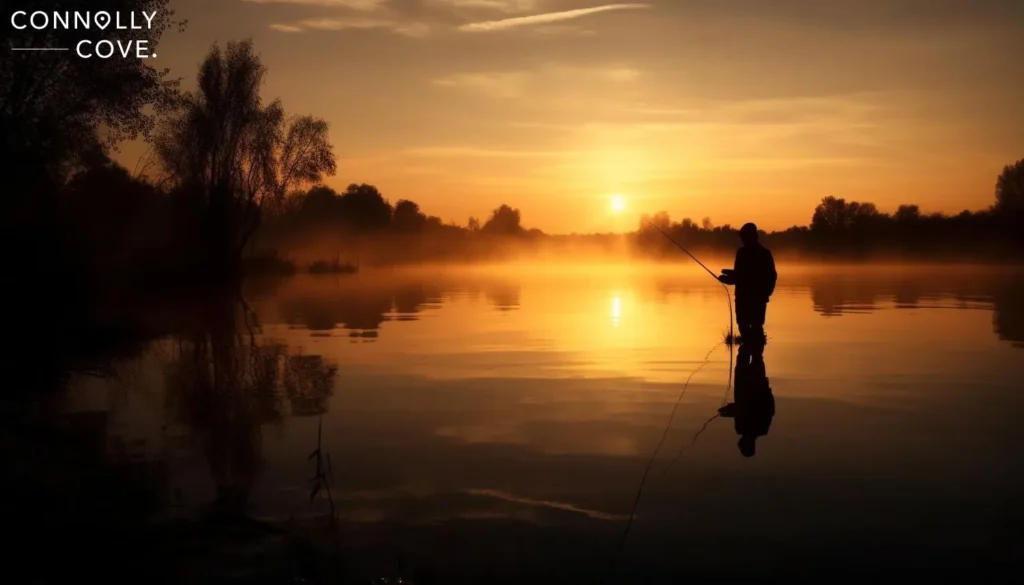
Ireland’s extensive coastline harbours a wealth of fishing spots, each offering unique experiences and challenges for anglers of all skill levels. From the rugged cliffs and sheltered bays of the west coast to the tranquil lakes and rivers of the interior, Ireland’s diverse landscape provides a haven for a variety of fish species. Here’s an extensive overview of some of Ireland’s most popular fishing spots:
The Wild Atlantic Coast
The Wild Atlantic Coast, renowned for its dramatic scenery and abundant fish populations, is a paradise for anglers seeking adventure and a variety of species. From the windswept shores of County Kerry to the rugged coastline of Connemara, the west coast offers a diverse range of fishing spots, each with its own unique charm.
- Dingle Peninsula: The Dingle Peninsula, jutting into the Atlantic Ocean in County Kerry, is a haven for anglers seeking a variety of fish species. The sheltered coastline provides excellent opportunities for catching mackerel, pollock, and cod, while the deeper waters off the peninsula are home to hake, monkfish, and blue whiting.
- Connemara: Connemara, a region in County Galway, offers a breathtaking blend of mountains, lakes, and sea, making it a paradise for anglers and outdoor enthusiasts alike. The sheltered bays and inlets along the coast provide excellent opportunities for catching sea trout, salmon, and brown trout, while the deep-sea waters off the coast are home to a variety of species, including ling, halibut, and turbot.
The Emerald Lakes and Rivers
Inland, Ireland’s tranquil lakes and rivers offer a serene and picturesque setting for anglers seeking a more peaceful fishing experience. From the renowned Lough Corrib to the meandering River Boyne, Ireland’s interior waterways provide a haven for a variety of freshwater species.
- Lough Corrib: Lough Corrib, Ireland’s largest lake, is a renowned fishing spot for salmon, trout, and char. The lake’s deep waters and varied habitats provide excellent opportunities for catching both brown trout and rainbow trout, while the salmon fishing season attracts anglers from around the globe.
- River Boyne: The River Boyne, flowing through counties Meath and Louth, is a legendary fishing spot for salmon and sea trout. The river’s varied terrain, from rapids to pools, provides challenges for anglers of all levels, and the abundance of fish has made the Boyne one of Ireland’s most popular fishing destinations.
Ireland’s waters teem with a stunning array of fish, each contributing to the rich tapestry of marine life. From the iconic salmon to the lesser-known gurnard, the diverse fish in Ireland’s seas not only sustain ecosystems but also play a vital role in the country’s culture, cuisine, and economy. Whether sought after by anglers or savoured on dinner plates, these fish signify the intricate relationship between the Irish people and their surrounding seas, embodying both tradition and innovation in the realm of seafood.


